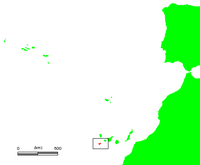
Photo from wikipedia
Adaptive of trees and its correlation with the climatic are causing changes in tree species performance and distribution, which will change breeding programs and influence forest productivity. To further evaluate… Click to show full abstract
Adaptive of trees and its correlation with the climatic are causing changes in tree species performance and distribution, which will change breeding programs and influence forest productivity. To further evaluate the joint influence of climatic factors and provenance on the ring width (RW) and ring density (RD) of Masson pine. We selected 18 provenances at Chun’an (CA) and Taizi Mountain (TZS) test site, which representing four different breeding regions, including the south, west, north and east-central regions. The results showed that the provenance effects were significantly for the RW and RD. The provenances from high temperature and low latitude regions had greater mean RW compared to species from local and cold sources. The geographical genetic variation in wood traits is generally weak. The correlation between RW of Masson pine and precipitation was stronger in the relatively arid TZS site compared with that in relatively wet CA site, as well as the effect of temperature and precipitation on RD was earlier than that in CA test site. The response relationship between establishing the width of tree rings and the environmental variables of provenance indicated that during the transition from the northern and western breeding regions to the eastern and southern breeding regions, the response of RW to climate factors changed from being temperature-based to being precipitation-based. In addition, the response of provenance to the climate of seed sources origin showed their own variation characteristics in each breeding area. Therefore, genetic improvement of big diameter wood and wood density can be gain through selection of provenance and analysis of adaptability.
Journal Title: Scientific Reports
Year Published: 2020
Link to full text (if available)
Share on Social Media: Sign Up to like & get
recommendations!